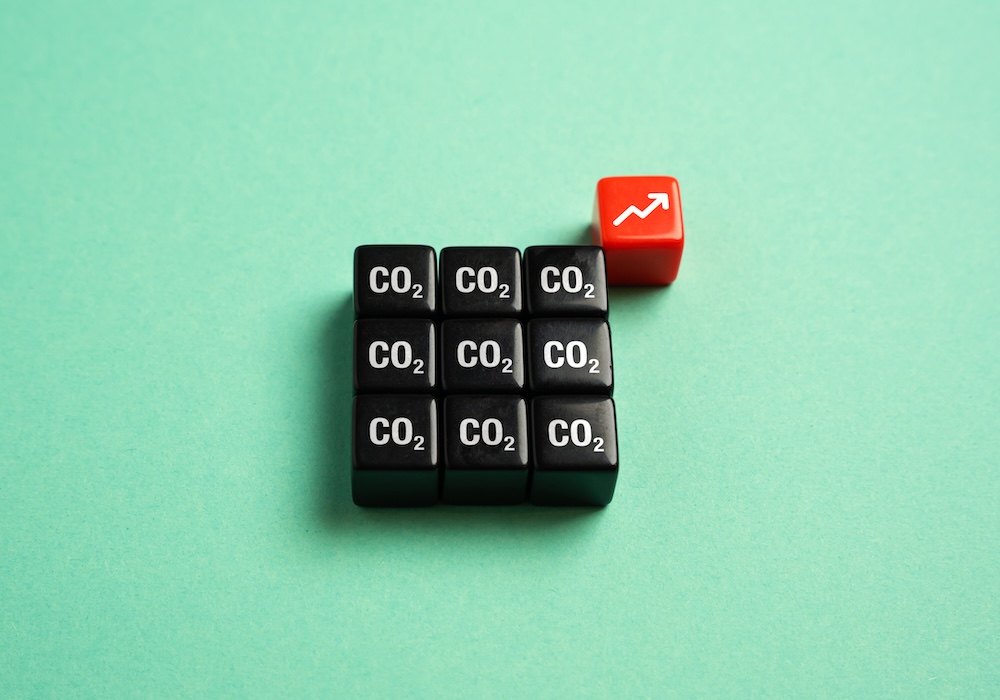Carbon dioxide (CO₂) is often treated like just another line in climate change reports, but its impact is far from ordinary. This invisible gas is a major driver of global warming, ocean acidification, and environmental disruption — and the numbers behind it are enough to make anyone stop and think. Here are 12 chilling CO₂ facts that shed light on just how urgent the problem really is.
1. CO₂ Levels Are at Their Highest in 800,000 Years
Ice core samples from Antarctica reveal that atmospheric CO₂ hasn’t been this high in human history. In 2024, the global average exceeded 421 parts per million (ppm) — far above the pre-industrial level of about 280 ppm.
2. We Add Over 36 Billion Tonnes of CO₂ to the Atmosphere Each Year
Global fossil fuel combustion, industry, and land-use changes pump tens of billions of tonnes of CO₂ into the air annually. That’s like adding the weight of more than 100,000 Empire State Buildings to the atmosphere every year.
3. CO₂ Stays in the Atmosphere for Centuries
Even if we stopped emitting CO₂ today, the gas we’ve already released would linger for hundreds — in some cases thousands — of years. This means climate change is a long-term legacy we’re leaving for future generations.
4. Half of Emissions Stay in the Atmosphere
About 50% of human-produced CO₂ remains in the atmosphere, while the rest is absorbed by oceans and land-based ecosystems. Unfortunately, these natural “sinks” are under increasing strain and losing efficiency.
5. Oceans Absorb a Quarter of Our CO₂ Emissions — and It’s Making Them More Acidic
The oceans act as a giant carbon sponge, taking in about 25% of annual CO₂ emissions. But this process changes the chemistry of seawater, making it more acidic and threatening marine life like coral reefs, shellfish, and plankton.
6. CO₂ Drives More Than 75% of Global Warming
While other greenhouse gases like methane and nitrous oxide also contribute to climate change, CO₂ is responsible for the majority of heat trapped in the Earth’s atmosphere.
7. The 10 Hottest Years on Record Have All Been Since 2010
Rising CO₂ levels correlate strongly with record-breaking global temperatures. The hotter climate is fueling extreme weather events, from heatwaves and wildfires to intense storms and flooding.
8. We’re on Track to Blow Past the 1.5°C Target
To limit warming to 1.5°C above pre-industrial levels, global emissions need to fall by around 45% by 2030. Current policies put us on track for closer to 2.5–3°C of warming — a level that would have catastrophic consequences.
9. CO₂ Emissions From Cement Production Alone Are Enormous
Cement manufacturing releases about 8% of global CO₂ emissions. If the cement industry were a country, it would be the third-largest emitter in the world, after China and the United States.
10. Deforestation Supercharges CO₂ in the Atmosphere
When forests are cut or burned, not only is the stored carbon released, but we also lose a natural carbon sink. Tropical deforestation alone contributes about 10% of global CO₂ emissions.
11. CO₂ Is Even Coming From Thawing Permafrost
As Arctic permafrost melts, it releases CO₂ and methane that have been trapped for millennia. This creates a dangerous feedback loop — warming releases more greenhouse gases, which causes more warming.
12. We’re Closer Than Ever to “Tipping Points”
Rising CO₂ levels push us toward irreversible climate tipping points, such as the collapse of major ice sheets or the shutdown of ocean circulation patterns. These changes could rapidly accelerate climate impacts and make them impossible to reverse.
Final Thoughts: Why These CO₂ Facts Should Keep Us Awake at Night
CO₂ may be invisible, but its influence is everywhere — in the air we breathe, the weather we experience, and the ecosystems we depend on. These facts aren’t meant to create despair, but to highlight the urgency of action. Reducing CO₂ emissions isn’t just an environmental goal — it’s a necessity for the survival and stability of life on Earth. Every fraction of a degree matters, and every action we take now can help shape a livable future.









Reader Interactions